Another trail shoe from Xero Shoes! Yes, that’s right, the Scrambler Low is the third trail shoe in the Xero Shoe lineup, so how does it differ from the Terraflex II and the Mesa Trail II?
I’ve been testing the Scrambler low for a few weeks now, running, hiking, and generally out in the mountains, and I’m impressed with the direction Xero Shoes are going with their trail lineup.
- The Michelin rubber outsole works amazingly.
- The larger stack height means you can choose it for any trail run/hike.
- Comfort straight out of the box.
But that doesn’t mean it’s all fine and dandy. There are drawbacks to the Scrambler Low, which I’ll investigate in this review.
Lastly, if you were a fan of old-school trail shoes from Altra, the Scrambler Low has just stolen your heart! I can’t believe I’m saying that!
Affiliate Disclosure: By clicking through the links on this page and purchasing the products, you’ll be helping me out. This is done because I receive a kickback from the sellers at no extra cost to you! Thank you so much for supporting us!
XeroShoes.com
Scrambler Low
(45-day exchange period)
These shoes were gifted to me by Xero Shoes, but I was not obligated to say anything positive or negative about the shoes. I’m just telling it how it is!
But is it a shoe for you?
Let’s find out.
I’ve worn a lot of Xero Shoes models, and to be honest, the Scrambler Low feels very reminiscent of many of the shoes in their lineup.
As a barefoot brand, it’s not the widest out there, but for 80-90% of us, it’s wide enough, but what sets them apart from the rest is the depth.
Xero Shoes are high-volume shoes in the midfoot and toe box. Meaning you’ll never scrape your toes on the top of the toe box, and you’ll have to tie them down tight to get a good lockdown. If you know you have shallow feet or you’ve had a bunching of material over the top of shoes in the past, the Scrambler Low’s may not be for you. But if you often find shoes way too tight over the top of your foot, try Xero shoes!

I said they’re not too wide, but they’ll suit average-width toe splays or less. Look down at your bare feet. Do your toes naturally splay wider than your midfoot, maybe resembling a fan shape? If that’s you, try a different brand. But most of us find the area just behind our toes to be slightly wider, which means the Scrambler Low will be fine for you.
The material used in the upper is soft and very forgiving. If you’ve ever tried some original Altra Lone Peak models, you’ll know what I mean when I say the Scrambler Low has a skater shoe feel. Soft, flexible, and forgiving. I do not doubt that it’ll be comfortable for everyone out there! That has implications, but I’ll discuss that in the Feel section.
Which minimal running shoe is for you?
Take a quick 5-question quiz to identify the perfect minimal running shoe for your feet! You'll get both road and trail options based on your answers!
There’s plenty of room in the heel too. With no supportive heel cup (a good thing), and the flexible material, the heel and ankle are very accommodating. Great for those who find conventional shoes tight around the ankles or have an issue with sitting too high in a shoe.
Ensure you use all the lacing eyelets and a lace lock to get a good lockdown. Because the upper is flexible, you’ll want to lock your foot in place.
XeroShoes.com
Scrambler Low
(45-day exchange period)
Here’s where things get interesting.
If I’m being 100% honest, the Scrambler Low isn’t entirely barefoot. But at the same time, that’s not a bad thing for an aggressive shoe like this.
There is forefoot flexibility, and it’s possible to twist the shoe torsionally, but the heel is stiff. It may be a little strong saying this isn’t a barefoot shoe. It’s way more flexible than most shoes on the market, and the ground feel is still there. But when compared with the Mesa Trail II, it’s a bit beefy. I found the sole to be particularly stiff towards the heel.
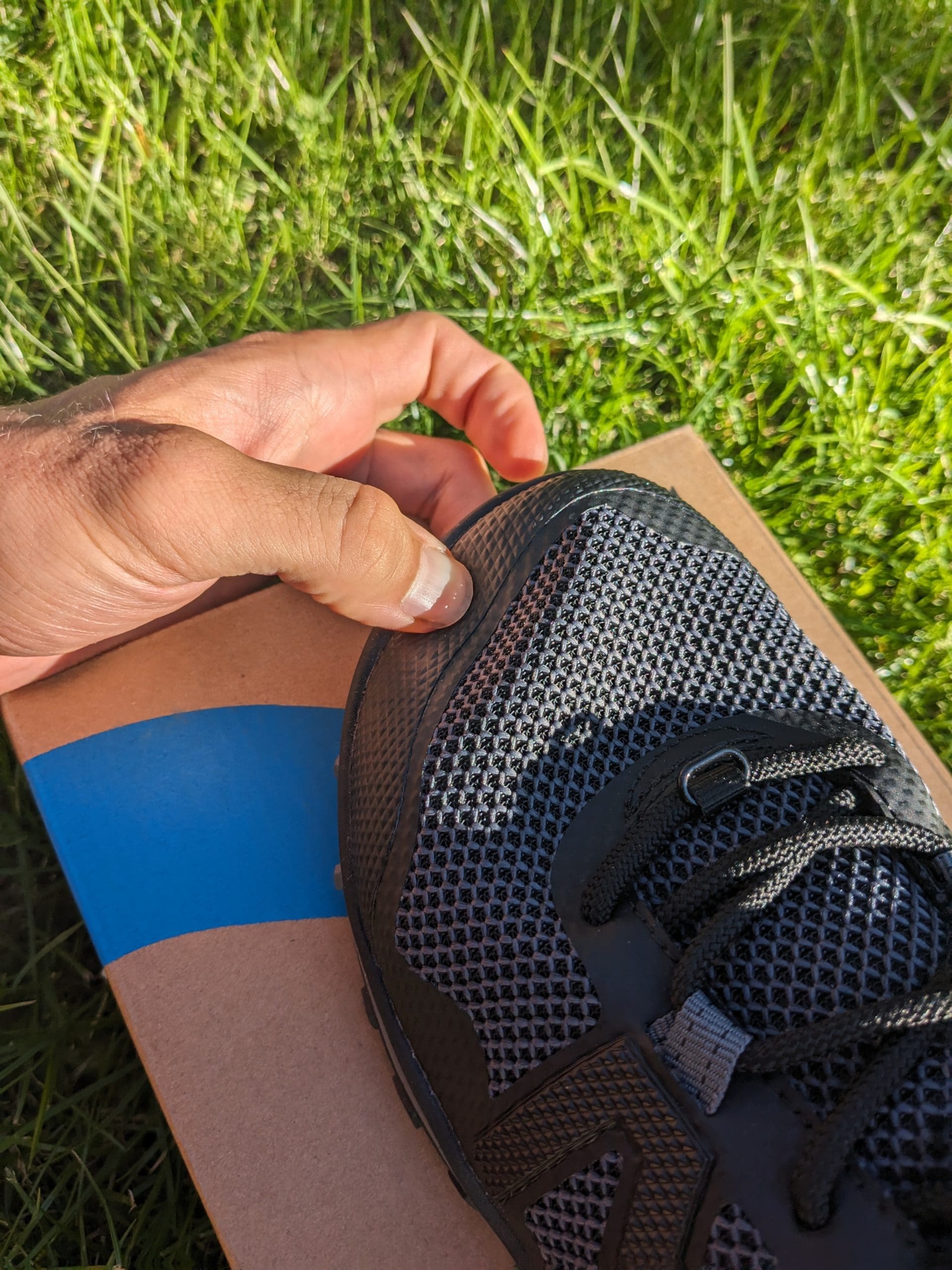
For an aggressive trail shoe, the thicker stack height comes in handy. The stack height is said to be around 10mm, but when you add that to the more rigid outsole that the Michelin rubber provides, you’ll never have bruised feet again! I’ve done my fair share of trail running in super thin barefoot shoes, and when you hit that rock slightly, boy, it hurts! That’s why we sometimes need some stack height. And the Scrambler Low does that without getting ridiculous.
The grippy outsole works wonders in many conditions. One thing I thought when I first tried these shoes was, finally, a minimal trail shoe I’d use in the UK! I.e., wet, muddy conditions. With 4mm lugs in a pattern resembling a bike tire, I found the ups and downs a breeze. This outsole is much better than any other Xero Shoes, and dare I say, even Altra!
A flexible upper and grippy outsole is an odd combination. When separated, the two features make sense. Flexible uppers allow for comfortable fits, and a grippy outsole is great for the trail. The issue is that when you’re flying downhill, your foot can move inside the shoe because there’s very little locking you down. I cranked the laces down tight, and it was ok but not perfect. I wish the overlays were a little more secure to stop the foot sliding.
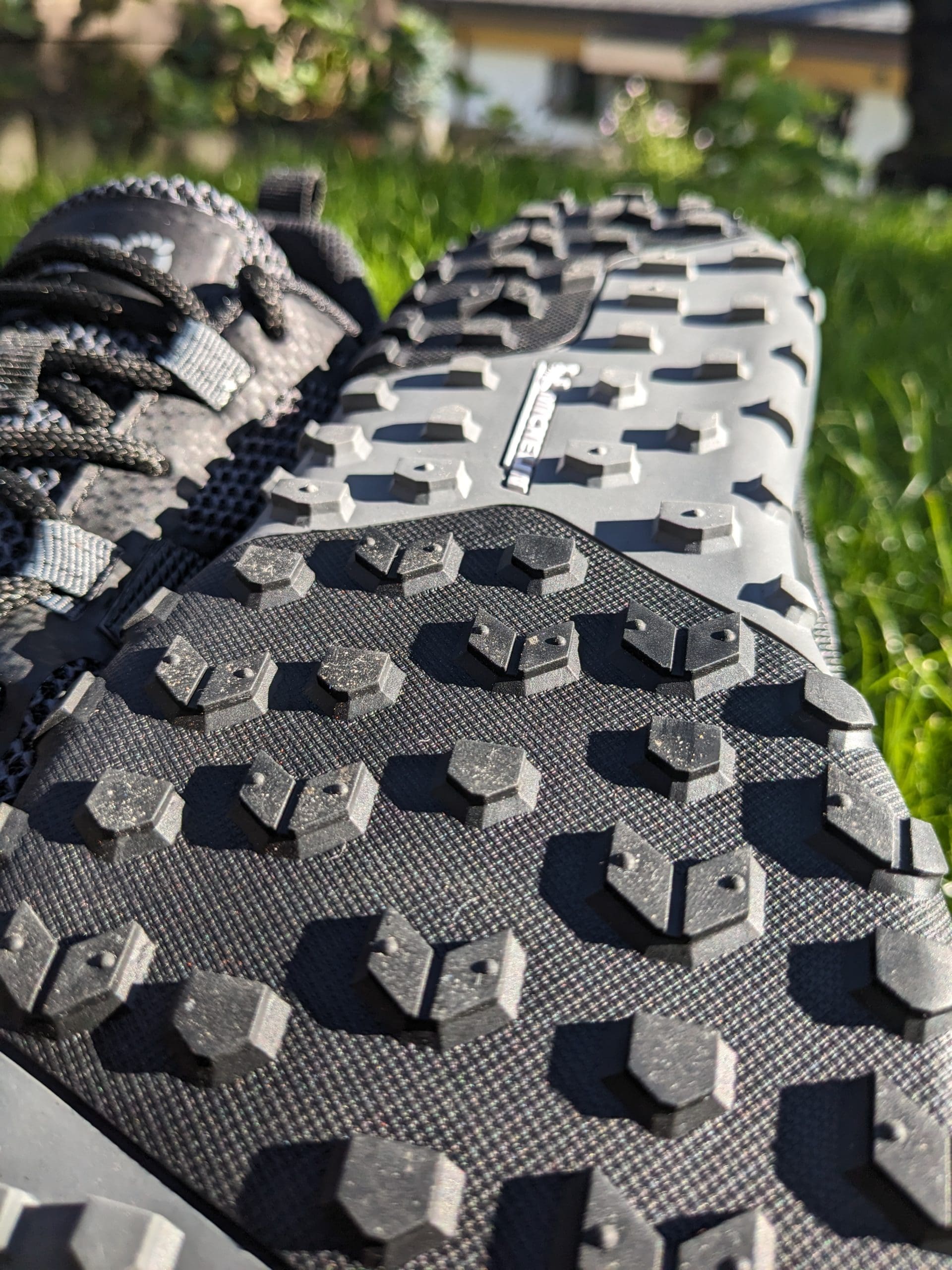
If you’re not going to hit the trail with significant gradients or going out for a hike rather than a run, you’ll be fine, but it’s something to remember for the mountains.
The website mentions cushion, but I wouldn’t let that put you off. In fact, the insole has more cushion than the midsole. Most of the stack height comes from the rubber. The shoe is very responsive, and any cushion underfoot does not feel unnatural. Remember, if you want to take the insoles out, the shoes will be very deep, and you could struggle to get a lockdown.
The toecap is soft, but the rubber rounds up in front of the toes. How often have you kicked a rock on the trail when running in minimal shoes? It hurts, doesn’t it? The Scrambler Low solves this, not with a toe cap, but by extending the sole a few mm further out from the front of the shoe. When you kick a rock, the tough rubber hits first, not your toes!
XeroShoes.com
Scrambler Low
(45-day exchange period)
This is where I usually talk about Xero Shoes 5000-mile outsole guarantee.
But this time, I don’t even think it’s worth talking about.
The thick chunk of Michelin rubber underfoot is going to last a lifetime. I’d love to know how thick it is. It feels solid! The lugs may wear down over time, but that is the nature of an aggressive shoe. No one will test the 5000-mile outsole guarantee; maybe they’ll even graft the sole onto a different shoe! 🙂
I do worry about the upper. It’s a soft material for a trail shoe; multiple scuffs could lead to holes. When you think of trail shoes, you think of tough materials. For some reason, the Scrambler Low is lacking some of these. Much like the Terraflex II, which I managed to break through the upper, the material seems too soft. I’d almost say you want more of a plastic feel than the fabric used. Only time will tell.

The welded overlays are there, but they’re not convincing. On the good side, the overlay runs around the shoe, so the upper will unlikely split away from the sole, but they’ll do little to protect the shoe and fabric. Nor do they provide much structure.
The laces are thick and old school, and the eyelets are simple. I said you’d have to crank these laces tight, so it’s good to know there’s a whole lot of material used in these laces! The construction seems solid, so it’s unlikely that you’ll have a lacing malfunction in these.
In the past, the Xero Shoes insoles have worn through quicker than I would have liked. If that happens to you, there are multiple options. I switch many of mine out for Altra insoles because they’re thicker and fill out the Xero Shoes depth nicely. Use Vivobarefoot insoles (which you can buy online) which last 1000’s of miles. Or contact support; they’re usually happy to help.
XeroShoes.com
Scrambler Low
(45-day exchange period)
I’m thrilled to see Xero Shoes going in this direction with their trail shoes.
The original Mesa Trail was thin, and although I loved them, they were often too thin for the mountain running I was going. That meant I had to reach for Altra Superiors more often than I’d like or get bruised heels.
With the Scrambler Low now in my rotation, along with the Mesa Trail II, I don’t need any Altra’s at all. And I can’t quite believe I’m saying that.
The only point that could change my mind right now is the durability. I have no doubt the outsole is sold, but will the upper hold up? Time will tell.
So, try the Scrambler Low if you want a trail shoe for rocky or muddy conditions and are willing to give up a little ground feel for better protection.
I was pleasantly surprised, and I think you will be too!
XeroShoes.com
Scrambler Low
(45-day exchange period)
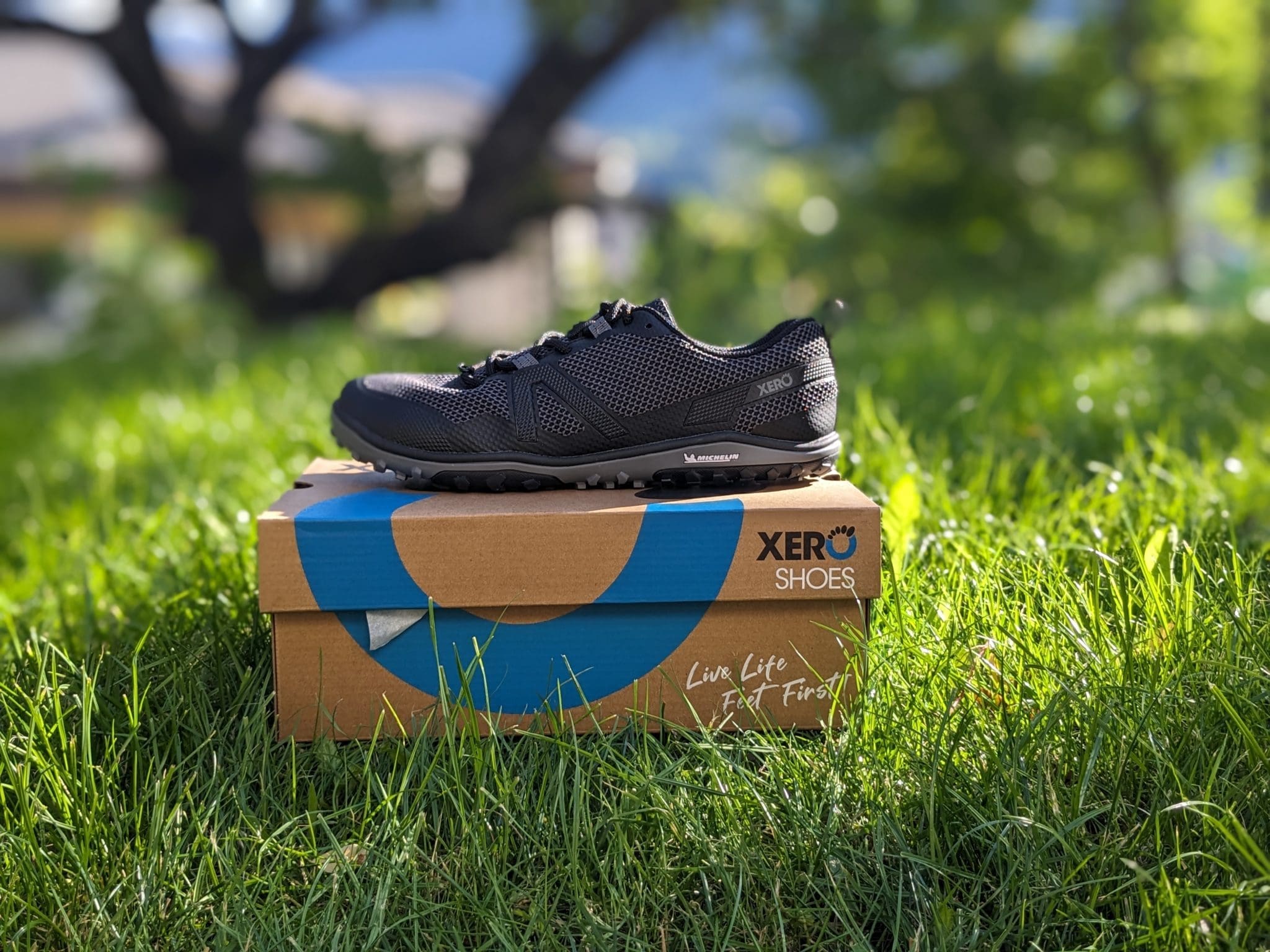
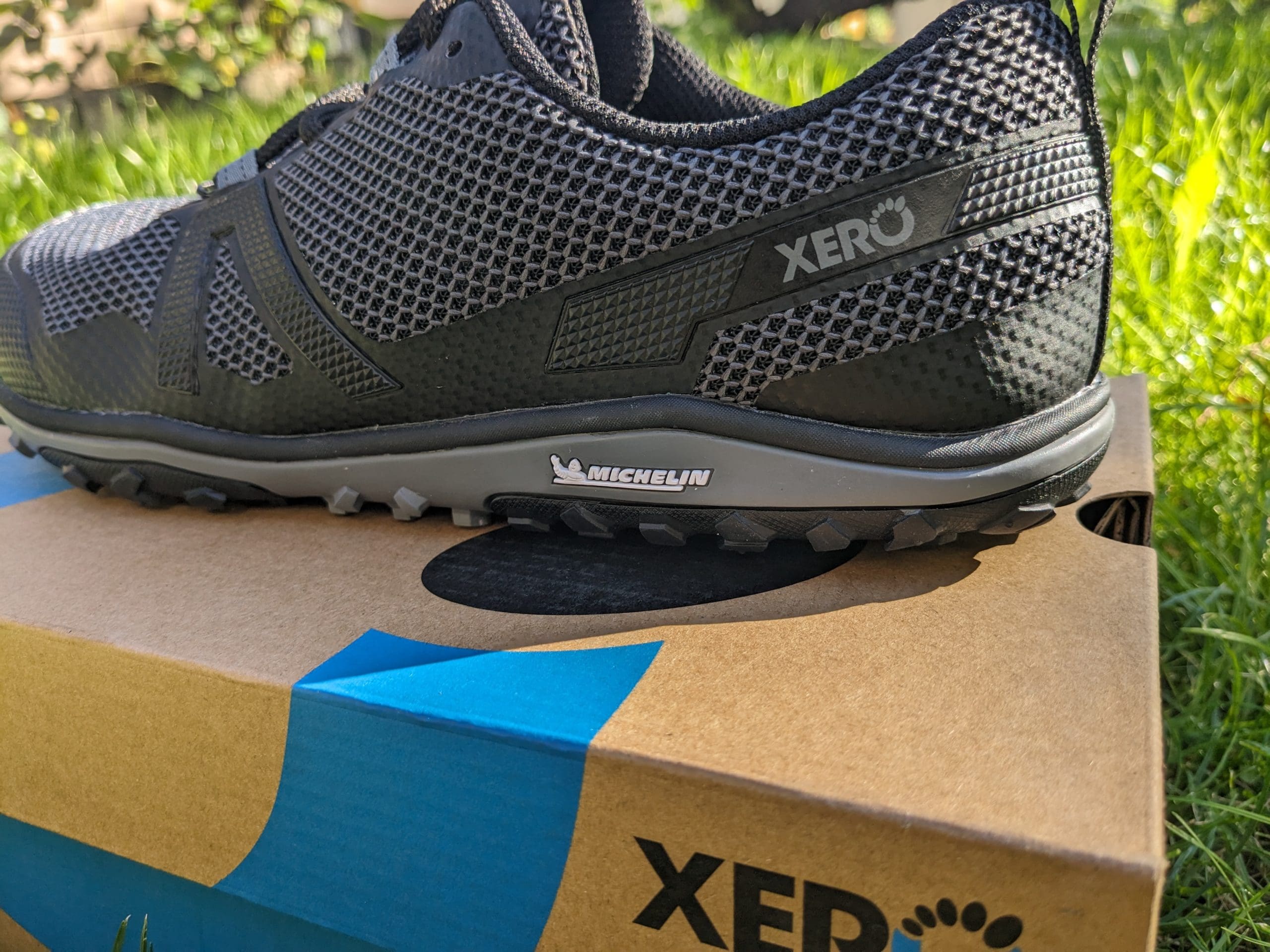
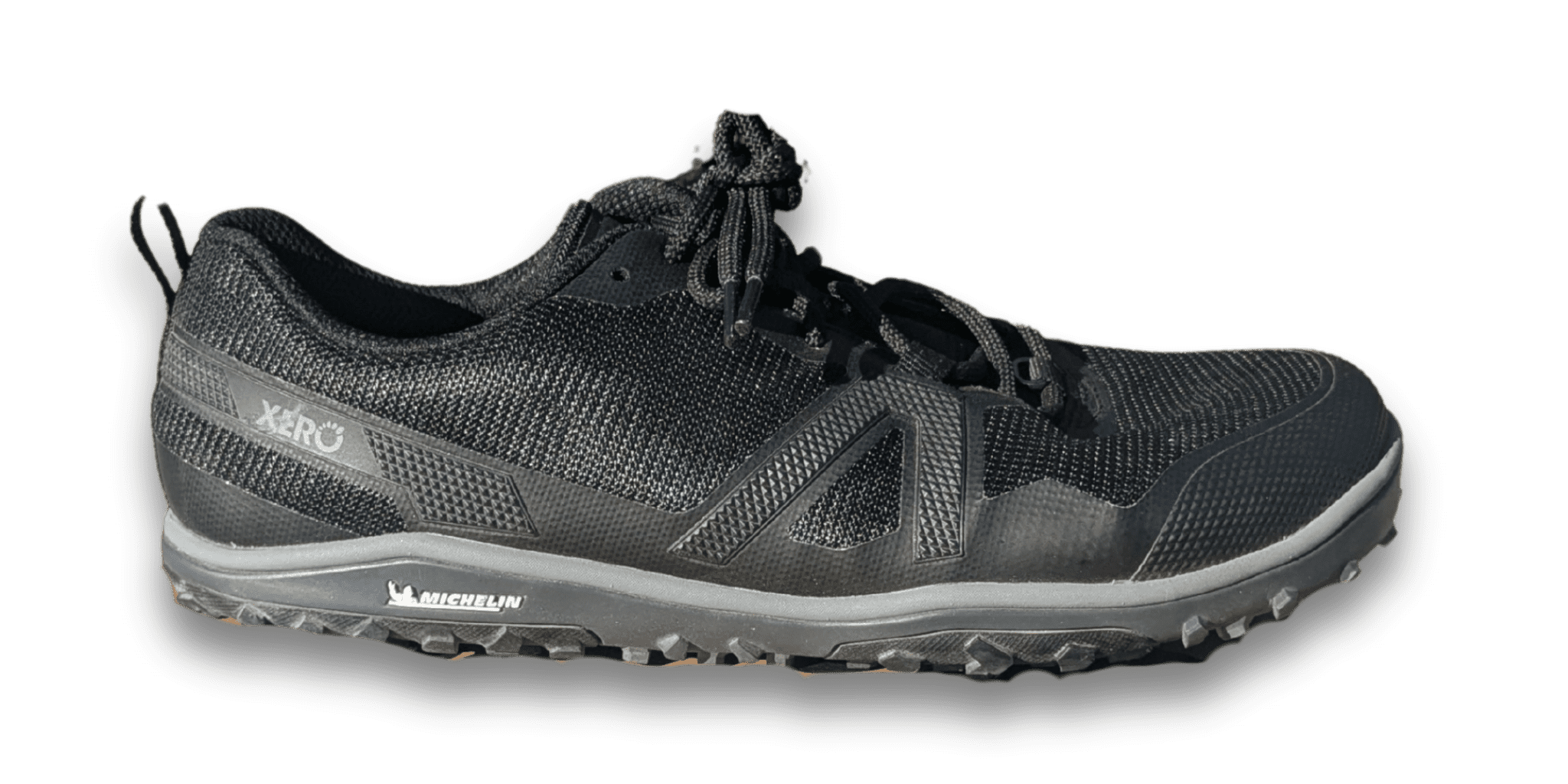
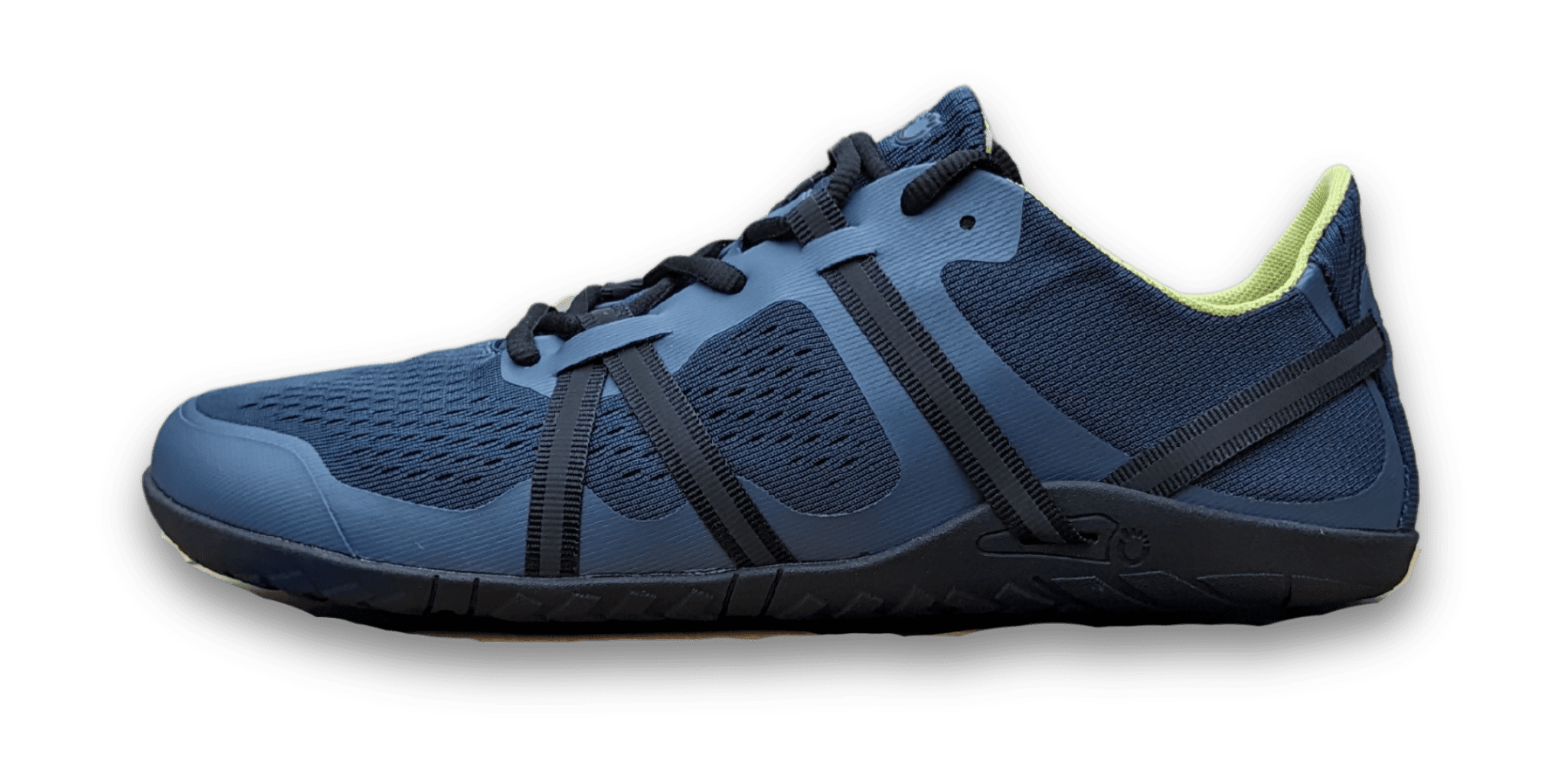


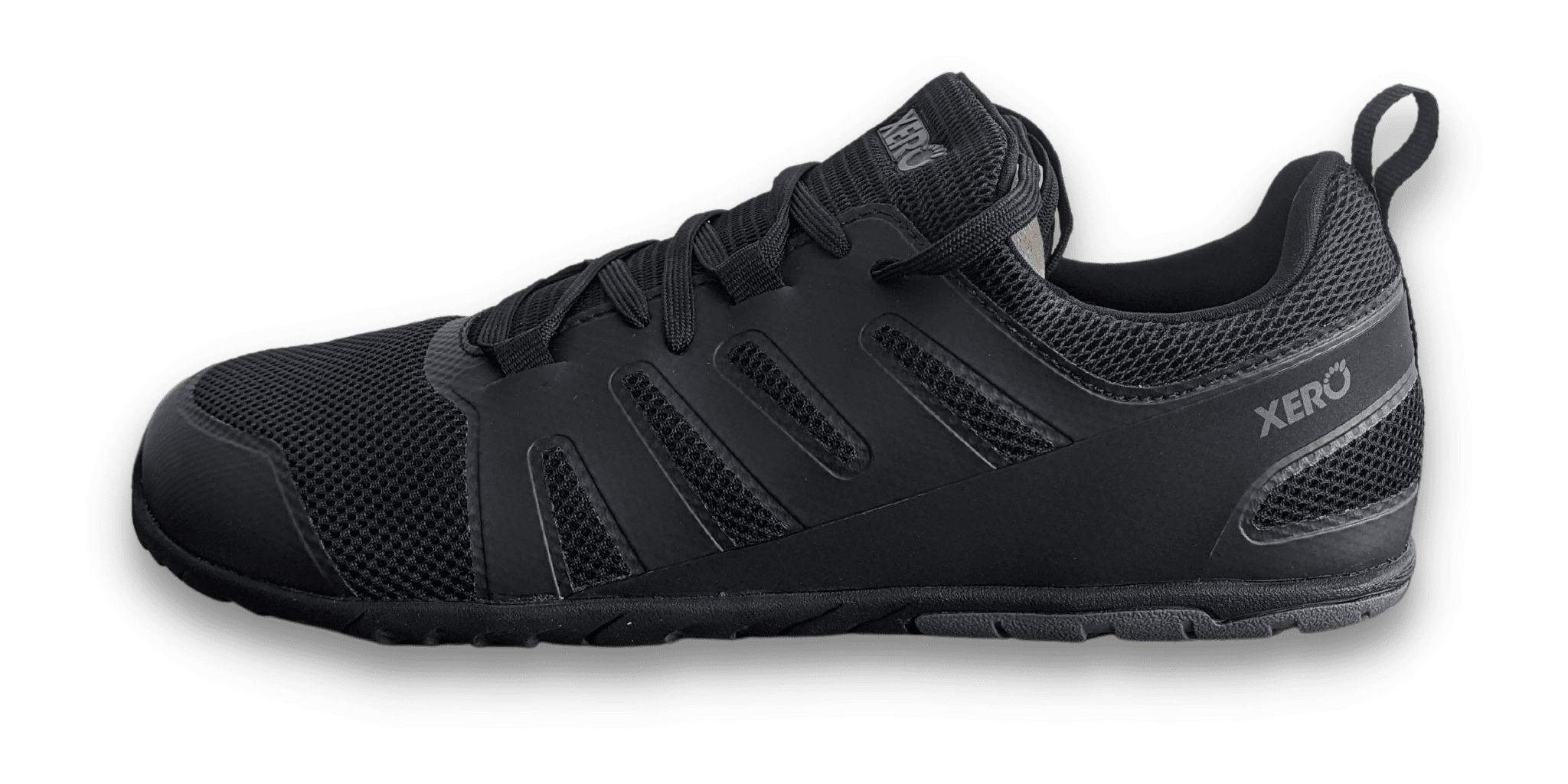
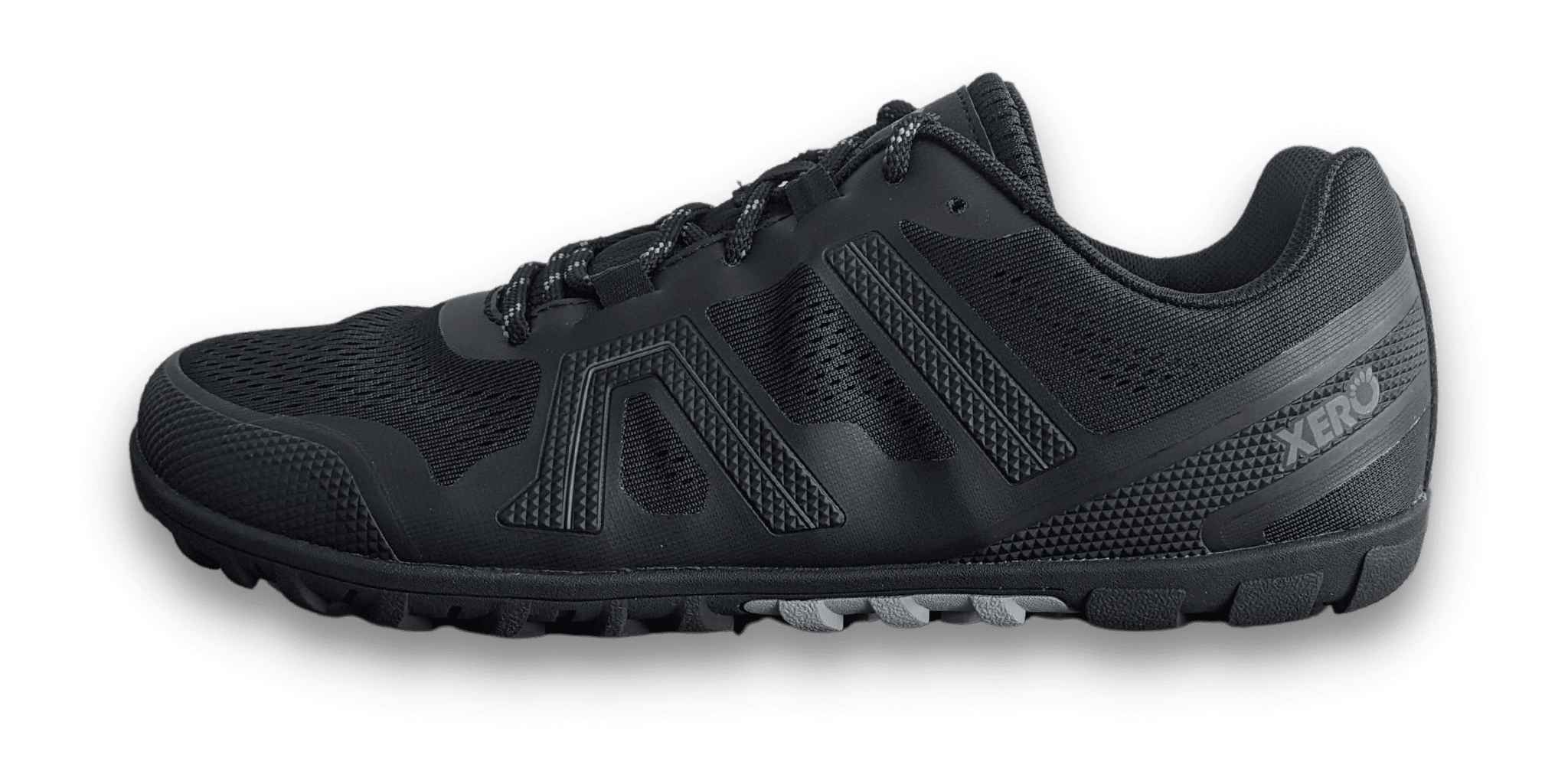


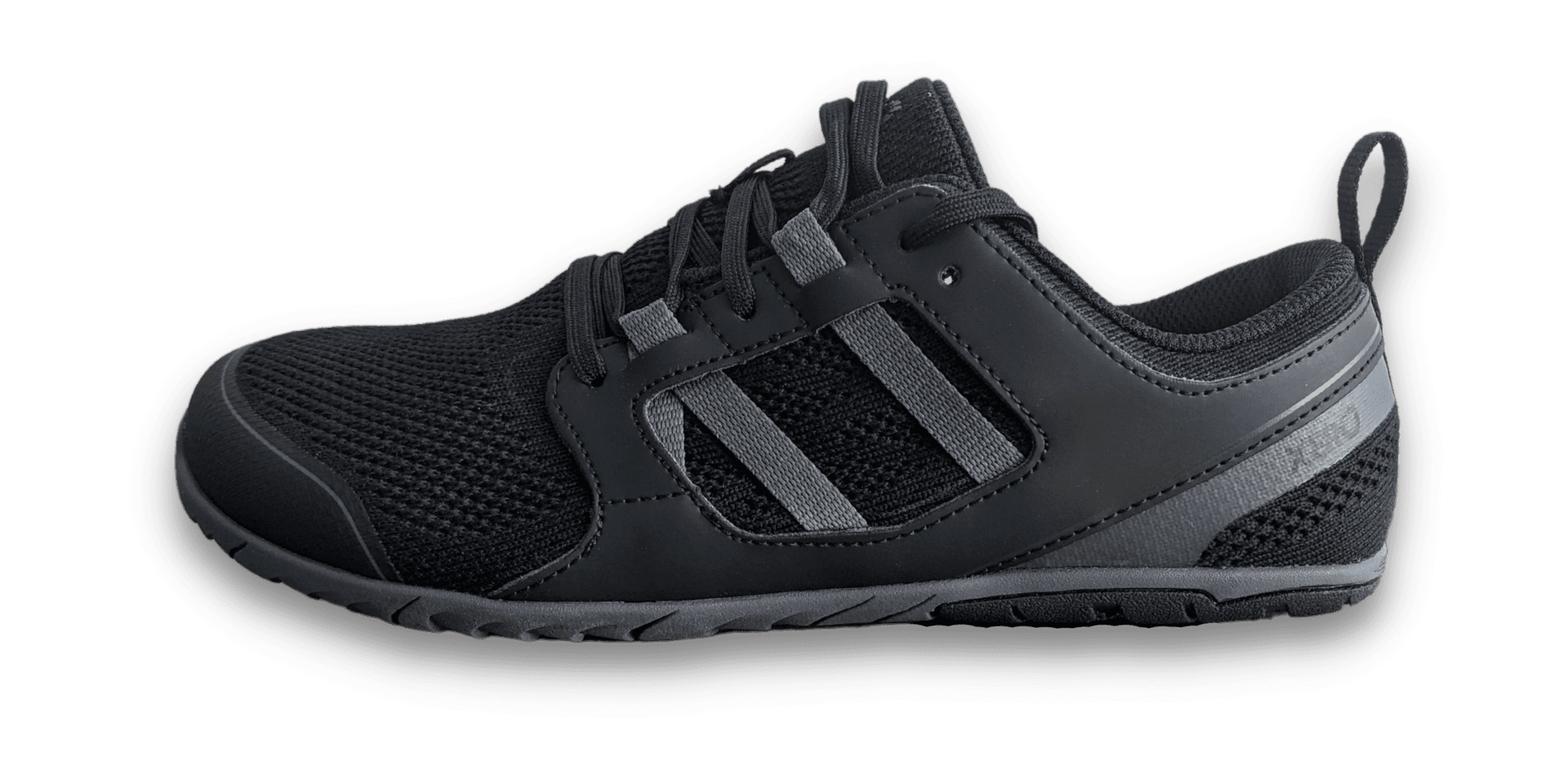
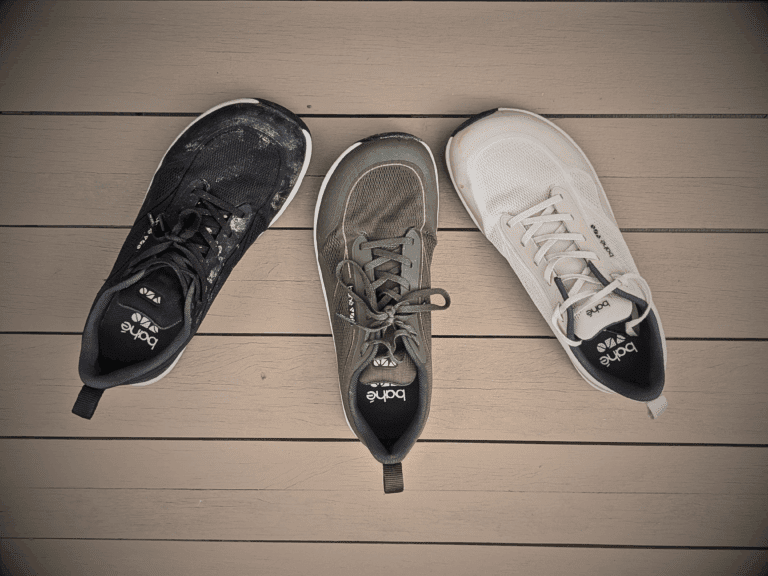

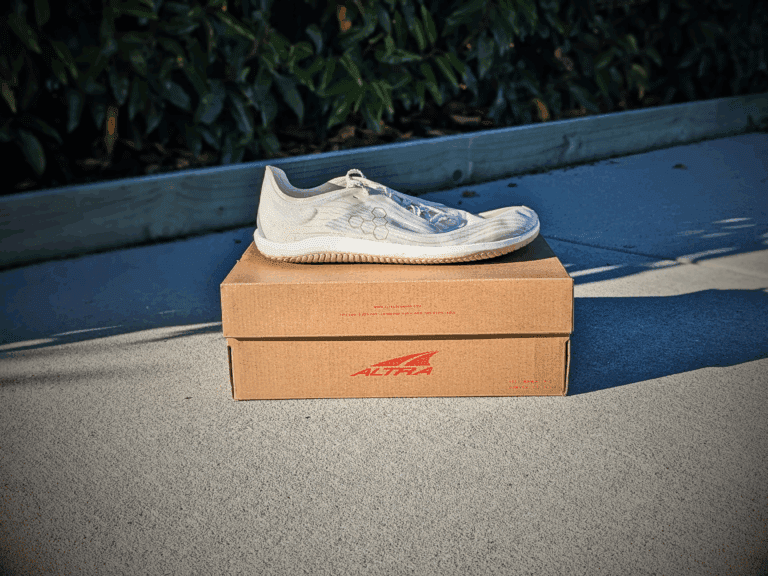
Interesting article. For (wet, muddy) forest trails would you recommend the Mesa trail 2 or the scrambler low?
Oh that’s tricky! I love the Mesa Trails, but the outsole on the Scrambler is much more suit to muddy condition. But beware, wet rocks are different thing! As with most trail shoes, they’re still pretty slippy.
So having used both the Mesa trail 2 and the scrambler low, which shoe would you recommend for what terrain? Or if I would buy just one pair the scrambler would be the go to for most circumstances?
I’m gonna join the question 🙂
Mesa Trail II: If your feet are adapted to barefoot running + the trails you are running on are smooth and not too technical.
Scrambler Low: If you’re transitioning from conventional shoes + the trails are rocky, aggressive, or muddy.
Although I love the Mesa Trail II, and that’s my first pick, for most others, I’d suggest the Scrambler Low if they are only buying one model.
Do they have better grip than Altra Superior? That’s the one thing I suffer from in those shoes. Also, could you explain about the sizing? For example, I am wearing the size of 44 on my Altra Superior 4.5. What size would you recommend for these ones?
Yeah these have better grip than older Superiors (although the Superior 6 had a major outsole upgrade which is very good). If I had to choose between the Superior 6 and the Scrambler Low, it would come down to fit. If you have a high volume foot, the Scrambler Low would work best, and for shallow feet, the Altra Superior 6’s would be my choice. Both shoes fit true to size, so I’d stick with EU44 for both.
Thank you for the quick and informative response!
Hi Nick,
Thank fir the review! From your experience, would you recommend sizing 1/2-1 full size up in these shoes for trail running? or you’re using your regular size? Thanks!
I would suggest choosing your regular size. The toe box is nice and roomy, and it fits long enough.
Thanks for the great write up! How are these on wet roads during a rain, are they slippery at all? I’m trying to find an alternate shoe when it’s raining, my Prio’s are too slippery when the road is wet
Sadly yes. Because the lugs are tall and thin, the surface area touching the ground is minimal. On a smooth surface like a road, that will mean less grip, especially when wet. If you’re looking for road options, I’d suggest the HFS, or Vivobarefoot Primus lite/knit.
So my question is similar sort of. I have gone through 2 pairs of Prios now and both had the body separate from the sole (front mainly basically peeled off). I mostly walk in horse trails and streets (asphalt) with the occasional grass field taking the boys to soccer. Since I am getting a refund instead of a replacement this time I need a good trail (horse trails so mostly soft dirt and dusty) shoe that can also do some road walking/jogging, and long hours at amusement parks (daily wear). I thought the mesa, terraflex or scrambler but Xero support also said the HFS or 360 might work. I love the feel but need the outer to stay attached to the sole for more than 6 months. I usually walk less than 10k steps daily so no 30 mile hikes for me. Thanks in advance for any advice on something that might work.
Thanks for the message. Let’s see if we can work this out.
I imagine that Xero Shoes suggested the 360 or the HFS mainly because you’re still walking on asphalt for some of the time, and it sounds like the trails you do don’t sound muddy/slippy.
I agree with them here. If you opt for a trail shoe, in this case, you’ll end up with premature outsole wear due to the softer rubber and pronounced lugs.
My suggestion would be the HFS rather than the Prio or 360. It’s a more flexible/modern design, and in general a better shoe. But the upper is lightweight, so you may be taking a risk with durability there (I’ve never had issues, though). The 360 would be more durable, but I feel it’s not minimal enough and a heavy-weight shoe just for walking.
Lastly, you could look at other brands like Vivobarefoot. The build quality is slightly better, although you pay for it in price! And I understand you have credit with Xero Shoes, so I understand that may not be an option. The Primus Lite III would be an excellent place to start.
– Xero Shoes HFS – It’s a great shoe, and I’ve not seen any durability concerns.
– Vivobarefoot Primus Lite III – Well made, but pricey. You’ll have to decide if the shoe shape will suit you.
Hi!
After all your praise of Altra superior and king 2 I was about to buy those shoes and now you are saying that you no more need Altra shoes. I get a bit confuses!
Thomas from Sweden
Yeah, I understand. In the end, both can be true.
I love the Superior, it works with my foot really well. The King MT comes through when I need a little more grip. But if want to optimize for flexibility, or Altra’s didn’t work for some reason, the Scrambler Low can take over Altra’s space.
Personally, I would still run Altra’s, but for some, they’re not deep enough in many models, so Xero Shoes could be an option for them now.